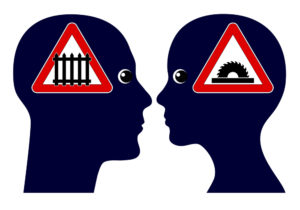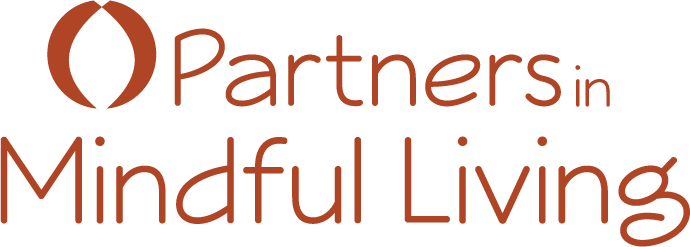
July 23, 2017
This is the second in a short series of posts clarifying some common, and sometimes overly used, terms.
The topic is codependency. I’ll attempt to 1) clarify it, 2) normalize it, and 3) offer a reframe for how to look at it.
Codependency is when you believe that ‘they’ are responsible for your discomfort or comfort, or that you are responsible for theirs and in some way need to fix them or protect them from themselves. When you believe you can’t live without them, or that you are not complete without them. Or if you believe you can’t live satisfyingly if you don’t have their approval and support and vice versa, you are probably struggling with codependency and/or poor boundaries to one degree or another.
Codependency arises out of a normal, non-pathological, and inherent human need to connect with others. You are human, and the human brain is hard-wired for connection. It’s also hard-wired to self-actualize.
Part of the problem may be that those two needs, connection and self-actualization, have gotten a bit twisted in translation over the centuries. Ending up in opposite corners of the ring, instead of shaking hands in the middle. We focus on one or the other to our detriment. The goal is to have a strong enough sense of self that we can healthily build interdependent relationships with others.
Codependency is a term originally coined in the mid-1900’s. It referred to family members or partners of alcoholics who were profoundly impacted by their loved ones’ alcohol use. They lost their own sense of self and began directing all their efforts toward changing or saving their alcoholic loved one.
But codependency didn’t begin there. The term represents a cluster of behaviors that were given a label when a particular group of people seemed to express the symptoms more than the general population.
That doesn’t mean it hasn’t always been around. Think Adam and Eve — one of them caved to maintain the approval of the other one.
As with poor boundaries, I think we can discard the idea that codependency is always horrible and damaging, and we must hang our heads in shame when it rears its ugly head. We all, to one degree or another, at times engage in codependent behaviors.
The goal is to learn to see it so that it doesn’t turn from a normal need for connection to an unhealthy loss of self.
Here are nine characteristics or behaviors I’ve paraphrased from an article in Psychcentral.com by Darlene Lancer, MD, MFT that can alert you to see if anything you’re doing might benefit from adjustment. Overlay them on your current relationships and gently assess whether you are comfortable with the degree of your connectedness.
Gently is the operative word here. The goal isn’t to stop caring for and supporting and helping the people you love. It’s to make sure you’re making healthy choices rather than reacting from a sense of compulsiveness or a feeling of being trapped with no options.
- Care-taking: You have an exaggerated sense of responsibility for people you’re close to. You need to help and might feel rejected if another person doesn’t want help. And you keep trying to help and fix the other person, even when that person clearly isn’t asking for or taking your advice.
- People-pleasing: You have a hard time saying a direct no. You may find ways to sidestep saying no, or sacrifice your own needs to accommodate someone else. You tell yourself you’re avoiding conflict.
- Boundaries: You have a hard time seeing where you end and they begin. We talked about boundaries last time. Sometimes someone struggling with codependency issues can waffle between weak boundaries – you can’t say no and feel responsible for the other’s emotional life, and rigid boundaries – you become closed off and withdrawn making it difficult for others to get to know you.
- Control: In the article, Ms. Lancer says, “Codependents need to control those close to them, because they need other people to behave in a certain way to feel okay. In fact, people-pleasing and care-taking can be used to control and manipulate people. Alternatively, codependents can be bossy and tell you what you should or shouldn’t do.”
- Low self-esteem: You have a sense you’re not good enough and spend a lot of time comparing yourself as better or worse than others. Interestingly, low self-esteem doesn’t always show up as not feeling good enough. Some people with low self-esteem also think and speak very highly of themselves but it can be an unconscious disguise to cover up feelings of inadequacy. If you believe everything is great, you don’t feel bad about yourself.
- Communication: You have difficulty knowing what you think, feel or need. Or you know, but you don’t want to own up to it. So you keep your thoughts to yourself to avoid conflict or looking foolish or feeling vulnerable.
- Obsession: You find yourself spending too much time thinking about ‘them’ or about your relationship. You slip into fantasizing about how you think things should be rather than dealing with the discomfort of the present reality.
- Dependency: You need others to like you in order to feel okay about yourself. And you worry that you can’t function on your own. You are afraid to let go of a relationship because you feel depressed and lonely when you’re by yourself for too long.
- Denial: You think the problem is about someone else or the situation. You complain about the other person not giving enough, or you to try to fix them, or you jump from one relationship to another. You don’t reach out for help and you have trouble receiving it.
That was a long list!
A suggestion – be careful about over-using or mis-using the term codependency. Stick with mindfully watching your behaviors to see if they’re giving you the outcomes you want. If they’re not, look at changing them.
Don’t go overboard. Sometimes you’ll act like a nutcase just because close relationships help you feel safe and secure, and that’s also something you’re hardwired to want. We all struggle with at least a few of the traits of codependency, at least some of the time.
If you find yourself unsatisfied with how you are relating to others, do some research and homework for yourself! Google codependency and boundaries. A great book for developing healthier boundaries in your intimate relationships is one I mentioned in a recent Seedlings – It Takes One to Tango by Winifred Reilly.
If you think you need extra support to address your relationship behaviors, especially if you are in a relationship where some form of chemical or process addiction is or has been involved, talk with a therapist or explore a 12-step program like Codependents Anonymous, Alanon, or Relationships Anonymous. A classic book on codependency is Codependent No More by MelodyBeattie. It still applies even though it was written in the 1980’s.
I want you to walk away with three things: 1) greater clarity around the term codependency and it’s over or mis-use; 2) a sense of normality around the reality that we are all, to one degree or another, codependent at times; and 3) you are considering paying less attention to the label and giving more attention to mindfully looking at your behaviors and doing something about them if they’re not getting you what you want.
Look for what works and what doesn’t to enable you to develop the relationships you long for. But don’t just think about it. Claim the relationships you want by taking action!
Next time we’ll look at love. Until then,
Much love,
